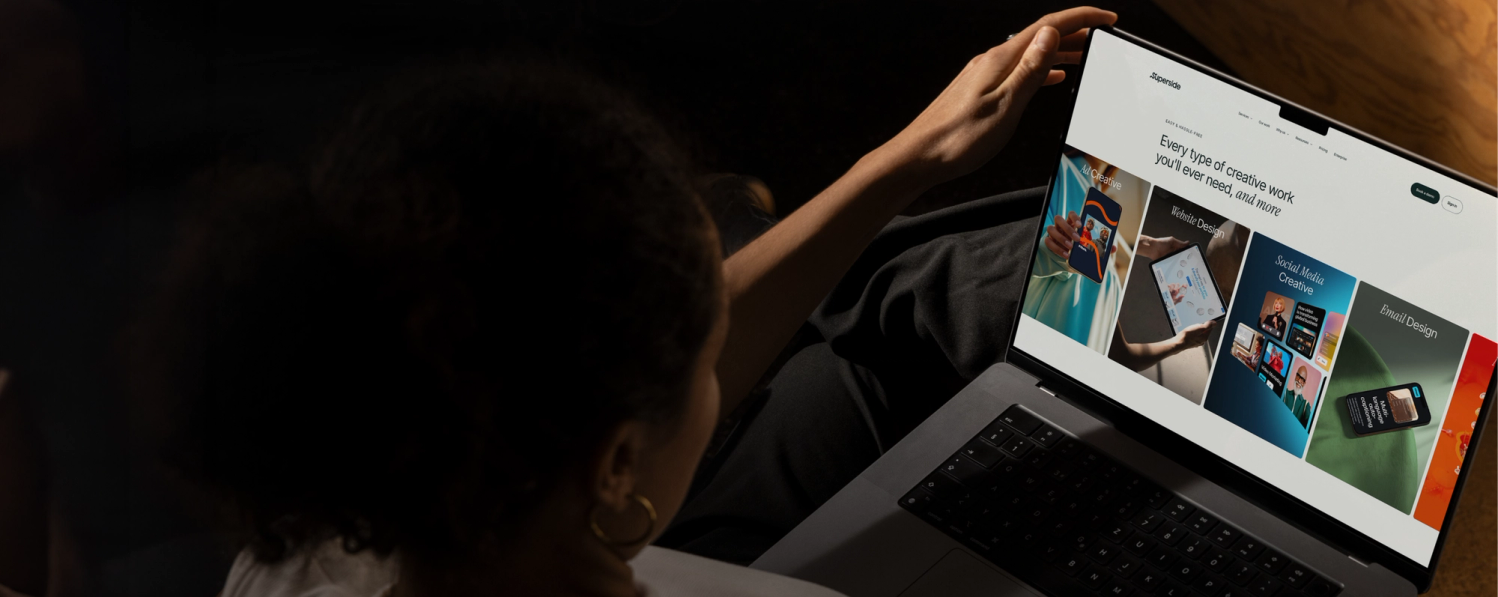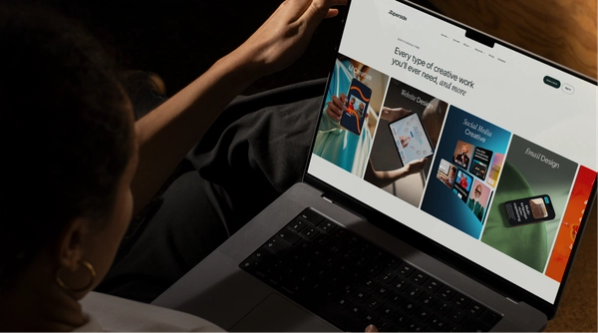Sorry Growth Marketers, Third-Party Data is Over: Here’s How to Save Yourself

Run for the hills. Abandon ship. Change your name, move to a small town, run a quiet café. Make no mention of cookies to your new friends or grandchildren, ever.
There’s an undercurrent of terror in digital marketing as of late: Third-party cookies are going away. While the strategy above may spare some marketers the reality of modern ecommerce, there is a way for growth-focused marketers with stronger constitutions to thrive when Google turns off third-party tracking in 2024. Brand and content afficionados will want to get in on this too—you play a big role here.
Many are wringing their hands in worry, others are burying their heads in the sand. Amidst the worsening recession, both are recipes for disaster. So what’s a marketer to do when the entire way they do things is threatened?
What’s Changing (and Why It Matters to You)
Non-marketers aren’t as comfortable being tracked online as we are, and Google’s extending an olive branch. Chrome, the browser with 66% of the world’s internet users, is turning off third-party tracking (cookies).
Many users see the installation of cookies as a violation of digital privacy, and consider this is a big win. There have been delays along the way, mainly due to Google giving marketers time to test out new strategies that, ideally, don’t infringe on user privacy.
It also gives Google more control over the user shopping experience. Without access to third-party cookies that simplify advertising, digital sellers will have to turn to Google services like Smart Shopping or Performance Max to be visible on Google Shopping.
Growth-Focused Marketers, Brand & Content Experts
Outside of the end-users themselves, no one’s more affected by this than marketers with an eye for scaling quickly. Brand and content folks suffer as well; it's their content that may soon be seen to be underperforming. The ability to target ads to these users based on collected data (age, gender, search history, view/click patterns, general onsite behavior etc.) was a massive win for marketers—one many businesses have come to rely on deeply. This leaves first-party cookies, which are really only useful for things like onsite search improvement, as the only cookie in town.
Unless you’re a huge brand, you likely lack the resources required to get anything useful out of first-party data. You'll likely struggle to target and remarket to prospects as you once did, and a critical avenue for most marketing strategies will be closed off.
Many Brands Won’t Make It
Let’s not sugar coat it: This sucks, and those who don’t rethink how their brand engages with digital audiences are going to suffer. Coupled with the recession, there’s a good chance people will lose their jobs as they clamor to prove value where value can no longer be proven.
But rather than cry over the milk to be spilled, let’s talk about what you, worried marketer, can do to ensure the coming changes work to your advantage.
Rethink “Vanity” Metrics
Many of us have been snubbing our noses at likes, reactions, comments, followers, views, shares, time on page and open rates for a decade now. Sure, a couple hundred thumbs on a LinkedIn post gives a warm feeling, but it’s hardly paying the bills.
But by the end of 2023, many of us will be coming back to those hearts and laugh reacts with our hat in our hands. By the time cookies go away, there’ll be fewer indicators of a campaign’s TOFU success beyond an audience’s reaction to it.
More social-savvy marketers are recognizing the importance of metrics like these to gauge visceral reactions to the brand. Soon enough, the capacity to provoke visceral reactions from prospects will be critical to remain competitive.
Provoke Immediate Response with Branded Content
The lines between an ad and a work of art are foggy, but they’re not that foggy. Both are intended to connect the viewer to a broader message, even if it’s an abstract one. Brands are at their best when they remember this and act accordingly: Putting the available elbow grease into brand assets that:
A) Cleanly and cleverly connect the brand message to its intended audience.
B) Distinguish the brand not just from others in its sphere, but from other content a user might scroll past.
C) Can be developed and distributed as quickly as they’re needed.
This is a tall order for most creative marketing teams. Resources are increasingly scant, and in the face of dire circumstances, they’re getting smaller. The time and effort required to ideate, develop and distribute compelling creative assets at scale hasn’t changed, but creative marketers are still on the hook for converting with leaner teams.
This is where many brands lean on CaaS (creative as a service) to help them not only survive, but scale through trying times. With always-on, veteran creative partners by their side, they’re able to produce the visceral, scroll-breaking content they need at a rate that keeps them in the game.
Feel like you don't have what you need in your team to create truly effective ads? Well, we've got the guide for you.
Diversify Creative Content
Even the most metropolitan marketers tend to stay in their comfort zones when they want results. It’s a human response we all develop over time. We get cushy, we lean on the reliable. I’m not knocking it. We all do it.
The problem today—and I do mean today, in this economic climate, with these privacy restrictions—is that our comfort zones aren’t reliable anymore. Budgets are getting slashed, teams are being cut, trusted strategies aren’t converting like they used to. It’s time to try new things.
Yes, that sounds trite. Yes, it’s what every “thought leader” with a keyboard and messiah complex pumps through ChatGPT before soliciting your email for an eBook of hastily-scraped content. But stretching beyond the confines of normal creative tactics isn’t something LinkedIn’s #1 Entrepreneur/Marketing Guru can take credit for, and it’s increasingly necessary in a saturated digital marketplace.
Use Different Mediums to Open Different Doors
Every brand—from the maw and paw’s down the street to the megacorp turning their block into mulch—has things they haven’t tried. Everyone has at least a few untapped markets, most of which they aren’t aware of until they stumble upon it trying something new.
Access to diverse audiences comes from diverse branded content. Even ambitious, enterprise-level brands can be pretty basic in this area: Socials filled mostly with middle-of-the-road/inconsistent images and serviceable copy. The occasional mid-budget video. A webinar once every quarter. These are okay starting points, but they’re not novel enough to distinguish you from your competitors, nor ubiquitous enough to keep you top of mind for prospects.
A wide content palette opens new doors and keeps them open at all times. Socials brimming with regular, brand-forward ads, infographics, and videos that align seamlessly with your existing brand message (no flimsy agency crap). Endless access to creative landing page designs that convert at higher rates. eBooks and emails delivered reliably, beautifully, without friction. This is just the tip of the iceberg—CaaS affords brands the compelling, fast creative they need to make a lasting impression in their markets. More than that, it frees up the space these teams need to spread their wings and focus on strategy instead of biting their nails.
And speaking of diverse content…
Make Video Marketing Top Priority
Indulge me in a small thought experiment. How long is your combined watch list? The Netflix account, the Crave, the Disney+... it’s at least in the dozens, right?
Now think of your reading list. If you’re like most people, it’s smaller. Again, no shame here. That’s just the power of video. Under most circumstances, we’d rather watch than read. The power of written content and still images/ads lies in their low investment. You don’t have to be in a quiet place to turn on the sound, or wait for the speaker to get to the part you’d normally just scroll to (YouTube’s “chapters” being hit and miss), or even like their face and voice. And for deeper dives into heady topics, most still prefer some words with pictures (hi, you!).
Yet when viewing circumstances are ideal—it’s quiet, time allows for fully engaged viewing, the speaker appears approachable without being insincere—video is the best way to make a prospect see things your way. Storytelling is so much easier when it’s compressible, and video storytelling can take you from point A to D in 30 seconds or less. The addition of a human face also, unsurprisingly, humanizes the entire experience. Add to that the endless possibilities of creative design within the video format, and there’s no reason most brand messaging shouldn’t have a video component.
Carve More Space for Video Content
There’s literally no piece of content you produce that couldn’t be turned into a video for extra coverage. If you’re focusing the majority of your messaging efforts on still images and words, you’re limiting your reach to the people who only fancy a read/glance.
Some brands know video’s crucial, but go about it in ways that similarly limit reach. They either have:
A) Folks not specifically trained in or adept at working video (the “many hands” approach doesn’t work in specialty areas).
B) Have one lonely soul dedicated exclusively to video marketing, not reasonably able to pump out videos fast enough to maintain TOFU awareness.
C) Talk in circles for months, maybe years on end for the need to “get on this video thing”.
Given today’s lean budgets, it’s understandable that most creative marketing teams don’t have the resources to staff a whole video production crew on their own. This is where CaaS comes in handy—wholly dedicated, deeply experienced video marketing pros are always on hand to whip up scroll-breaking content. Consistent, engaging video storytelling is how modern brands make their voices heard among the noise.
We understand that launching creative projects, especially in new mediums, can be a struggle, which is why we created an in-depth design operations guide that can help you to streamline your creative processes.
Bet on Brand to Scale Through the Storm
It’s easy to idle and bemoan the new privacy practices. But like Netflix to video, the businesses that emerge stronger from industry shocks are those who adapt to them. They don’t cower, or hope the blight skips their house by accident. Nobody wants to be the “Blockbuster” here, but many creative marketers are setting themselves up for it through inaction. Commerce is littered with those who saw the tidal wave coming and did nothing—they vastly outnumber the success stories.
Let’s use this as an opportunity to get back to basics: The message, and the horse it rides in on. Up to 75% of campaign performance is determined by the quality of the creative. With tracking as we know it going away, compelling brand content that reliably performs in digital mediums is the mainstay. It ensures the brand cuts clearly through the impenetrable chatter that surrounds it. Steady access to just-in-time, high caliber creative content is the surest footing we have.
Don’t tremble with worry, don’t bury your head in the sand, don’t buy the cafe, don’t hope this passes you by. Strengthen the core of your marketing efforts: The message contained in every ad, email, video, social post, landing page, motion design and the multitude of others is what you’ll be known for. The sharper that message cuts, the more the right people will hear it. When people are coming to your doorstep, you won’t have to worry so much about tracking them down.
David is a Senior Content Marketer at Superside. A former journalist with bylines too numerous to enumerate, he brings his love of storytelling and semantics to the marketing world. Recognizing the sizable gaps in the creative-as-a-service (CaaS) sector, he jumped at the chance to fill the creative void for ambitious brands. In his off hours, he enjoys loud music, making vegan meals and being made fun of for making vegan meals. He’ll gladly talk to you about any of the above on LinkedIn.
















